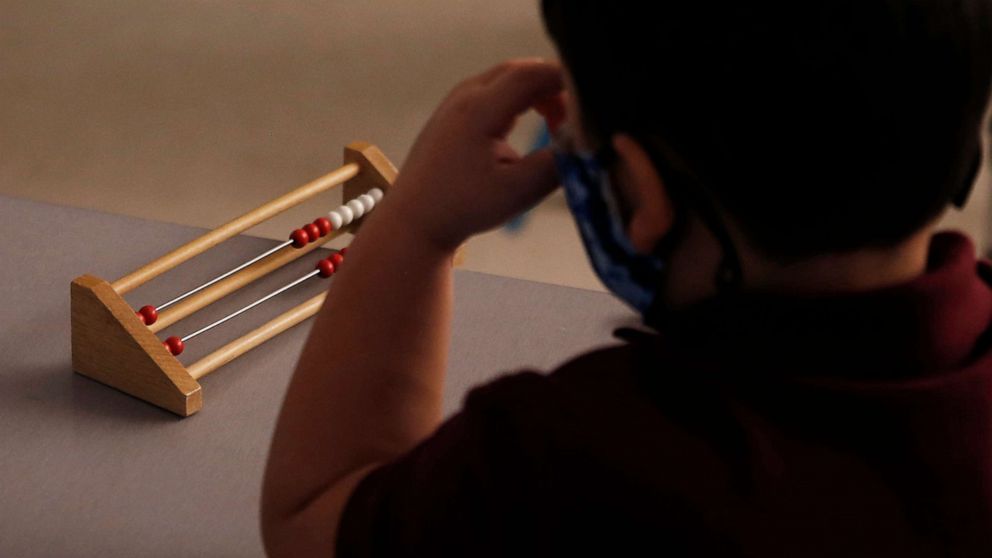


Thirteen-year-olds received historically low math test scores in the most recent National Assessment of Educational Progress (NAEP), dubbed "the nation’s report card."
The steady decline, which occurred between 2020 and 2023, shows a drop in math and reading scores for the average 13-year-old and heralds a troubling trend as students recover from pandemic-era virtual learning.
The long-term NAEP trend assessment compares student scores to pre-pandemic levels in 2019-2020. The test, administered in the fall of the 2022-2023 school year, revealed math scores fell by nine points and reading scores dropped by four points. Compared to a decade ago, math scores are down 14 points and reading scores have declined by seven points, according to the NAEP.
The news comes as students have experienced months of declines on NAEP exam scores, from civics and U.S. history to all-time lows in math and reading.
MORE: Student test scores declining across the countryIn 2020, school districts nationwide were forced to implement remote instruction, which some states continued for more than a year to slow the spread of COVID-19. With the education community rebounding from those changes, the latest low test scores reflect the challenges and shortfalls of virtual learning that students and teachers endured in the process.
Meanwhile, as education has simultaneously become a politically charged issue, some are using the falling scores to press for changes in the nation's schools.
"Union bosses like Randi Weingarten have conspired with politically charged school boards and administrators to implement one-size-fits-all policies that limit students’ growth and replace core academic courses with partisan indoctrination," House Education and the Workforce Committee Chairwoman Virginia Foxx, R-N.C., said in a statement, referring to the president of the American Federation of Teachers.
"In the process, an entire generation of students has fallen behind," Foxx added.
Both math and reading scores declined in five selected percentile groups: 10th, 25th, 50th, 75th and 90th, reflecting lower-, middle- and higher-performing students, according to the NAEP report. Students’ math scores decreased in all regions of the country and in nearly all student subgroups. American Indian/Native and Black students saw the most significant changes in math, with scores down by 20 and 13 points, respectively.
The report also found lower reading scores in all percentile groups for both male and female students. Mixed race and Black students’ reading scores declined but there were no double-digit setbacks among those racial demographics.
"Unfinished learning continues to weigh on students across all grades and subjects, and this is especially true for Black and Latino students, English learners, and students from low-income backgrounds who experienced the brunt of pandemic-related upheaval and uncertainties," said Denise Forte, president and CEO of The Education Trust, an organization "committed to advancing policies and practices to dismantle the racial and economic barriers embedded in the American education system," according to its website.
"Now is the time for education leaders and advocates to work together to give students what they need by marshaling evidence-based resources to provide high-quality learning experiences so every student can live their chosen life," Forte said.
Despite the most recent NAEP scores, Education Secretary Miguel Cardona said some states are already on the rebound.
"While this latest data reminds us how far we still need to go, I’m encouraged that the historic investments and resources provided by the American Rescue Plan and the Department of Education are beginning to show positive results, with several states returning to pre-pandemic levels of achievement on their state math and literacy assessments," Cardona declared in a statement.
The performance tests were administered by the National Center for Education Statistics to 8,700 13-year-olds between October-December of the 2022-2023 school year. The tests have been administered since the 1970s.